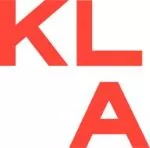The National Consumer Secretariat (SENACON) started a Public Consultation relating to the regulation of children's advertising. The regulation defines advertisements as “any message, conveyed in written form, through sounds or through sounds and images, which, directly or indirectly, in analog or digital media, seeks to promote the use of products or services placed on the market by the supplier”.
The Consultation aims to conciliate the constitutional principles that protect children and adolescents (considered as hyper vulnerable consumers) and the rights related to the free advertising initiative of companies and suppliers.
The draft establishes several restrictions to protect children and adolescents, many of which already exist in the current legislation. As highlights, we cite the prohibition of the advertisement (a) causing any type of discrimination; (b) associating children and adolescents to situations incompatible with their hyper vulnerable condition; (c) imposing a notion that the consumption of the product provides superiority, and, the lack of it, inferiority; (d) causing embarrassment to parents or harassing others in order to impose consumption; (e) employing children or adolescents as role models to voice direct appeals or suggestions for consumption; (f) using a journalistic format; (g) mentioning that the product contains peculiar characteristics when this fact is not real; and (h) using situations of psychological pressure to instill fear; such advertisements should also seek to (a) contribute to the positive development of family and social relationships; (b) respect the dignity, ingenuity, credulity, inexperience and feeling of loyalty of the target audience; (c) give special attention to the psychological characteristics of the target audience; (d) avoid psychological distortions in advertising models; (e) not to encourage behavior incompatible with civilized coexistence in society.
The regulation also prohibits the merchandising or indirect advertising actions that employ children, elements of a child's universe and other artifices in order to attract the attention of children.
The regulation also deals with specificities to be observed in soft drink ads, such as the prohibition of using children who are excessively underweight or overweight (according to commonly accepted biometric standards) and the non-use of imperative incentives for the purchase or consumption of these products.
Any participants in alcohol ads must be more than 25 years old and have an appearance compatible with that age. Advertisements of firearms may not display children or minors, and advertisements of non-prescription pharmaceutical products should not be made in such a way as to induce the use of products without parental or guardian supervision.
Contributions to the regulation may be sent until February 27, 2020. The draft of the regulation and the form for the input of the contributions are available here.
The content of this article is intended to provide a general guide to the subject matter. Specialist advice should be sought about your specific circumstances.


